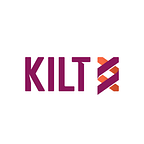Unlocking the Power of NFTs with KILT’s Public Credentials
On March 13, 2023, at the South by Southwest conference in Austin, Texas, KILT announced its first use case for public credentials with Public Pressure who will use KILT to verify NFTs on their Marketplace collections.
NFTs are unique digital assets that have become popular as a way for creators to sell their digital works of art, music and other creative content. To see how public credentials add utility to NFTs, let’s take a look at a music NFT example. (You can also watch the video here, or view the slides here.)
How Music NFTs Work
Martin, an artist, writes a song and wants to create a music NFT from it. First, he goes to a music NFT platform like Public Pressure and submits his track.
Every NFT uses a smart contract — a small program on a blockchain — that contains information about that NFT. This enables decentralized and secure interactions without intermediaries, allowing ownership to be changed in a transparent way.
Public Pressure uses a smart contract to make an NFT of Martin’s song and puts it on a blockchain.
The smart contract of a music NFT holds the creator, the content, and the owner. In this example, Martin is still the owner, as he has just submitted his track on Public Pressure.
Alice wants to buy Martin’s track. Using the platform, Alice instructs the smart contract to change the ownership of the NFT.
From this point, when anyone checks the information on the blockchain it will show Alice as the owner.
Normally that is the extent of the functionality of an NFT. Using KILT Protocol, even more utility can be added by introducing public credentials which allow users to add any information — such as comments, votes or likes — to any NFT, enabling social interaction on NFTs across all chains.
To see how it works, let’s go back to how music NFTs were created. An artist, Paul, composes a track and sends it to the music NFT platform, which creates a music NFT on the blockchain, as before.
This time, Public Pressure also issues a public credential on the KILT blockchain to certify that the track was created by Paul. This credential can be linked to the NFT even though the NFT is on another blockchain.
Anyone can add a public credential to any NFT; whether they own it or not. So artists or their record label can add certificates of authenticity, or DJ Lisa can add a public credential to say the track is part of her playlist, potentially increasing the value of the NFT.
And since each credential is signed with a unique DID, you can check that the person who issued the credential is who they claim to be.
So using this system, Mike can issue a public credential on the KILT blockchain saying he likes an NFT, even when the NFT is on another chain like Ethereum.
When Mary goes to the Public Pressure marketplace and checks the information on the NFT, the platform will show the information from the smart contract of the NFT on one blockchain, as well as the information from the public credential on the KILT blockchain. Mary can see that the NFT of the Chill Tune created by Paul is owned by Tom, and that Mike liked it.
How can a music NFT and its smart contract on any blockchain be connected in a safe way to public credentials related to that NFT on the KILT blockchain?
The connecting link is the AssetDID of the NFT, a unique identifier that describes any digital asset on any blockchain. This is generated from publicly available pieces of information: the blockchain the NFT is on, the NFT Standard, the smart contract address and the NFT ID.
In this way, every existing and future NFT on any blockchain can be referenced by an AssetDID and a public credential issued on KILT can be linked to any NFT on any chain via that AssetDID.
There’s no limit to the number of public credentials that can be linked to the same NFT.
To summarize how KILT enables social interaction on NFTs across all chains: any NFT holds information about itself in its smart contract on the blockchain. Simultaneously public credentials related to that NFT live on the KILT blockchain.
The public credentials are linked with the NFT via the AssetDID. They remain linked even if the NFT ownership changes, because the AssetDID of the NFT always remains the same.
In this system, anyone with a KILT DID can add any information to any NFT as a public credential. Any existing or future NFT automatically has a unique AssetDID. This system works with any blockchain and any smart contract. The information in a public credential linked to an NFT is available to everyone to read, as it is on a decentralized public blockchain that cannot be censored or stopped.
Public credentials for music NFTs represent a critical breakthrough for artists, fans and labels. Credentials always stay with the NFT even if ownership of the NFT changes, adding utility and value while fighting fraud.
About KILT Protocol
KILT is a blockchain protocol for generating decentralized identifiers (DIDs) and verifiable credentials, providing secure, practical identity solutions for enterprise and consumers.
Discover more on the KILT website, brainstorm KILT use cases in Discord, or follow KILT on Twitter and Telegram to keep up with the latest news.
